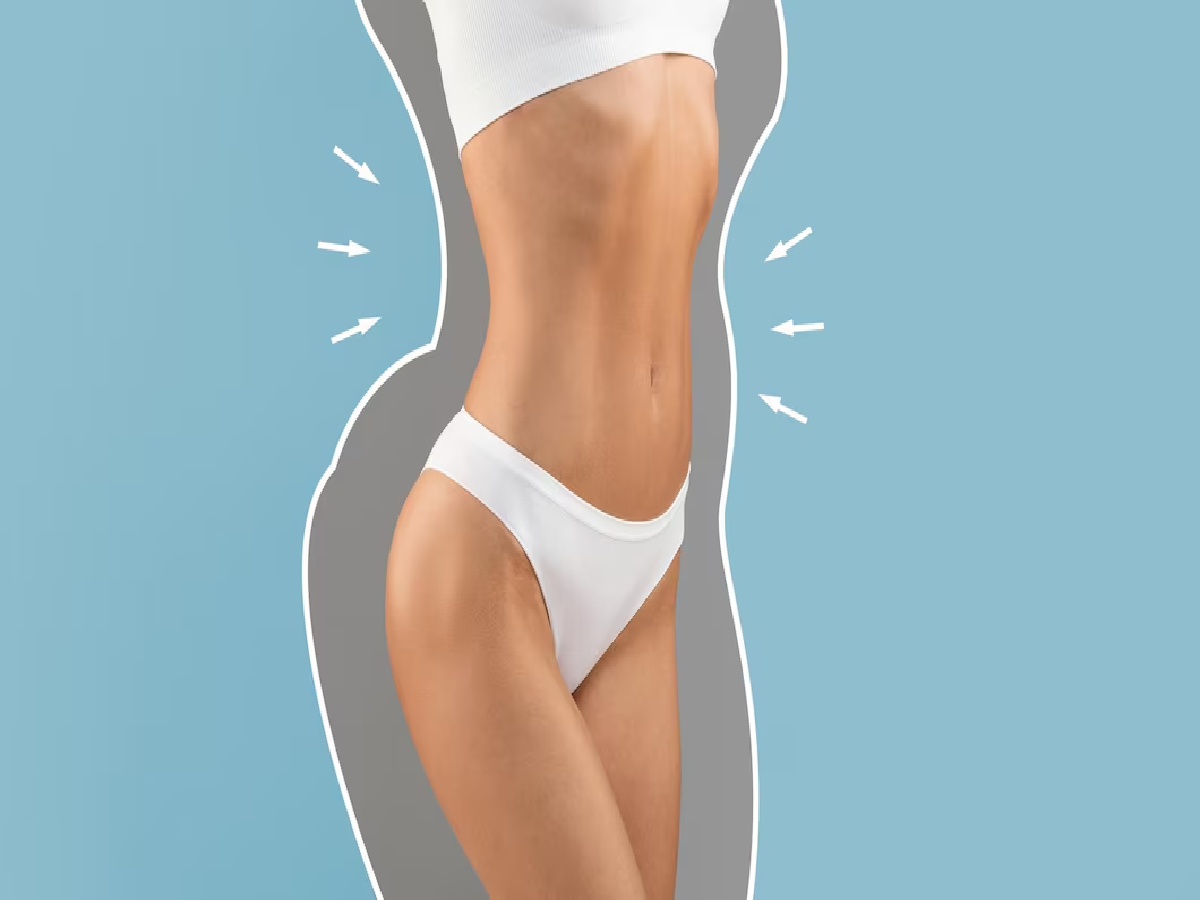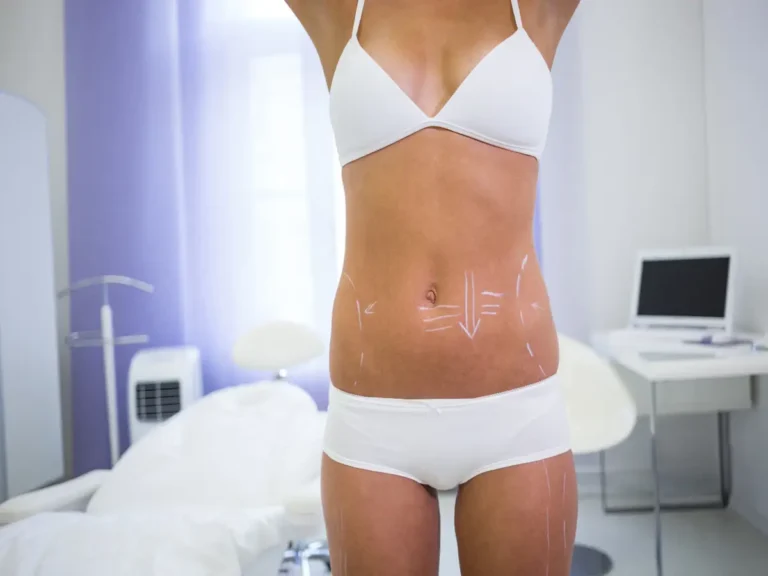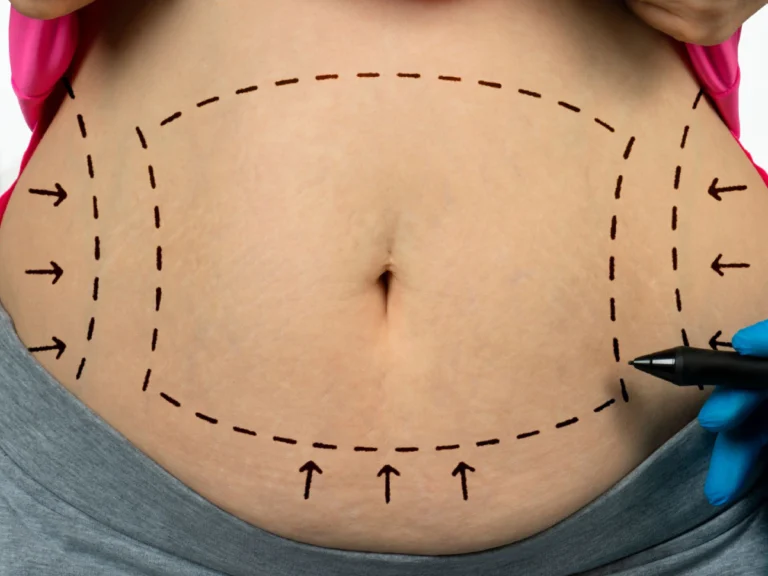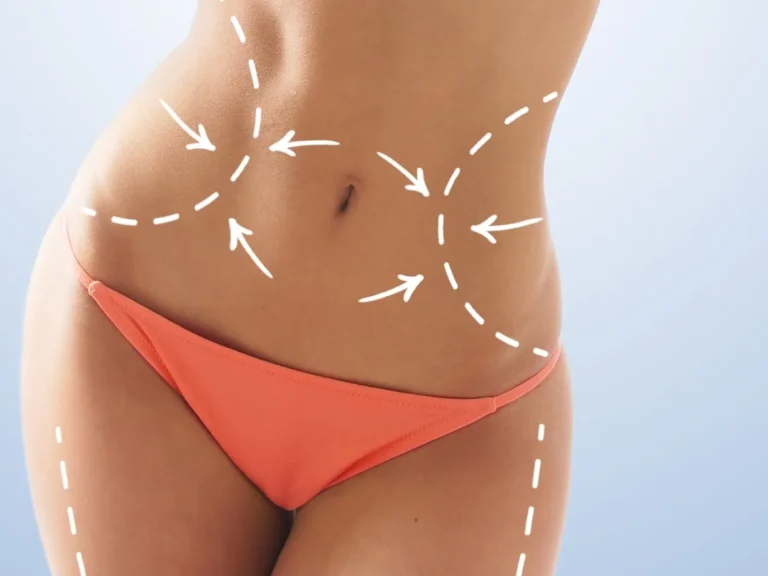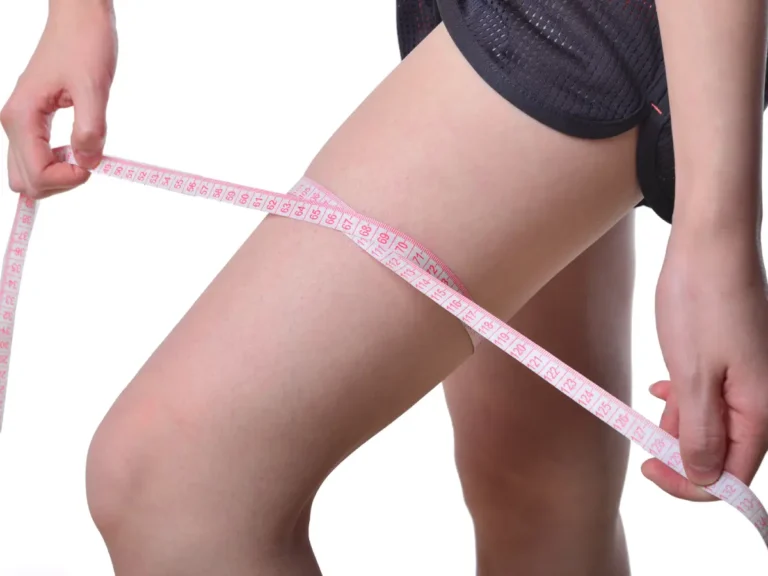Vaser liposuction has become a staple in body contouring, praised for its precision and reduced downtime.
Get a free consultation with experts.
But like any surgical procedure, it carries inherent risks. Before diving in, it’s crucial to understand these potential complications to make an informed decision.
Vaser lipo risks
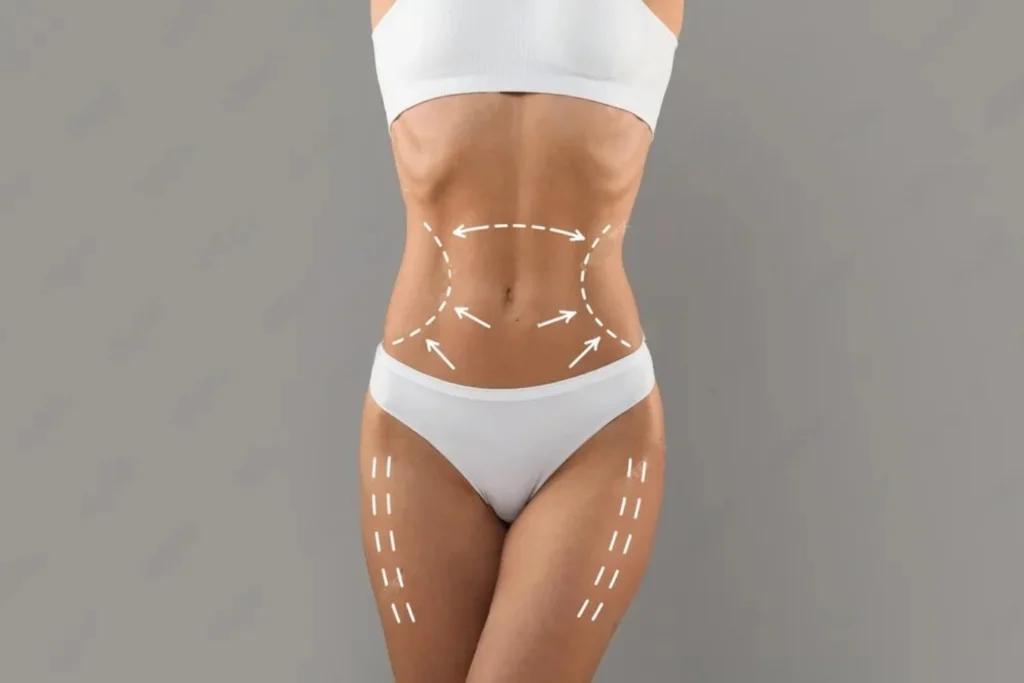
During the Procedure: What Happens
Vaser liposuction procedure uses ultrasonic waves to liquefy fat prior to its removal from the body. Although generally considered safe, there are some risks associated with the procedure.
However, the procedure carries certain non-significant risks, as with all non-surgical procedures.
- Anesthesia reactions: The patient may have an allergy to local anesthesia and faint or feel nauseous.
- Burns: Unintentional use of ultrasound energy during the treatment could be dangerous and result in thermal damage to the skin or subcutaneous tissue.
- Nerve damage: Typically manifests as either temporary or permanent paraesthesia or anesthesia at the treated site as a result of nerve injury.
- Bleeding: Bleeding during the surgery is also very rare and, in rare cases, can cause hematoma.
Right After the Procedure: What to Expect
Immediately following Vaser lipo, patients may experience several effects as the body begins to heal. As the body heals after Vaser lipo, a patient will likely experience some of the following effects:
- Swelling and Bruising: The developed regions are characterized by skin inflammation, and a minor to moderate skin injury may take weeks.
- Fluid Drainage: During the recovery period, there may occasionally be a slight leakage of fluid from the incision site.
- Pain: After the procedure, some patients may experience mild to moderate pain and discomfort. To alleviate this, we prescribed a painkiller.
- Skin Sensitivity: Tingling is another side effect that may appear in the treated area, and it’s important to note that this area is typically sensitive to touch after treatment.
Risks during recovery
The recovery period after Vaser liposuction also carries certain risks.
Read more: Recovery time for Vaser liposuction
Similar to any surgical procedure, the recovery period following Vaser liposuction also entails certain risks.
- ·Infection: septicemia can also occur at the operation site if strict hygiene measures are not followed after the surgery is completed.
- Scarring: Although the incisions are small, there is still a chance of developing visible scars.
- Seroma Formation: This condition entails the accumulation of a fluid beneath the skin, potentially necessitating tapping.
- Skin irregularities: It may manifest as beading, prominence, or bumpiness. This is because after liposuction, especially where the patient had a lot of fatty tissue removed, the patient’s skin looks wrinkled, rippled, or dimpled.
- Prolonged Swelling: The resolution of edema can take several weeks or months, and it may occasionally be associated with the retention of edema fluid.
- Blood Clots: Though such side effects are mild and not life-threatening, there are higher risks, though they are rare, including deep vein thrombosis and pulmonary embolism, which involve the formation of blood clots in the legs and lungs, respectively.
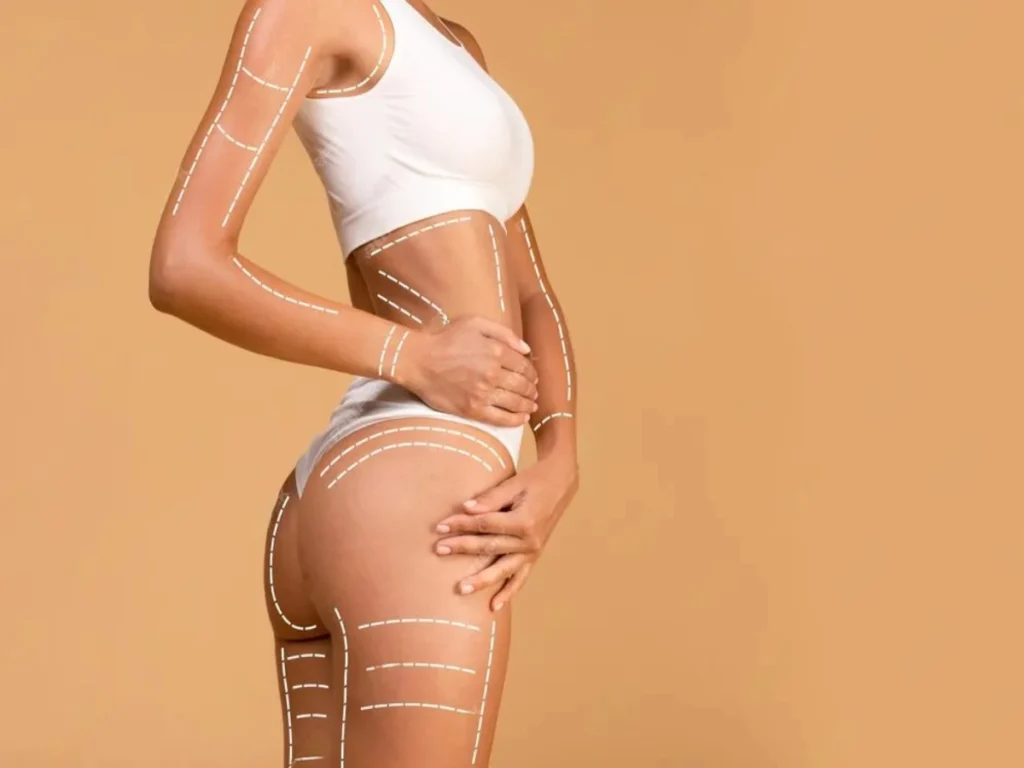
Who should not get liposuction?
Your BMI is too high.
BMI, based on weight and height, is a crucial indicator of liposuction suitability. Higher BMIs increase the risk of complications, with patients over 40 more susceptible than those at normal weight. Thin individuals with insufficient skin “give” also have higher risks of irregularities and infections post-surgery.
You aim to remove more fat than is recommended.
The American Society of Plastic Surgeons advises liposuction procedures to remove no more than 5,000 cm (5 liters) of fat and fluid due to high complication rates.
Surgeons should take these guidelines seriously, as they are based on postoperative studies. If excess fat is present, surgeons may recommend weight loss programs like the Orbera Weight-Loss Balloon.
Your medical clearance for surgery is not available
Surgeons classify patients based on their overall health, with underlying conditions such as asthma, diabetes, and high blood pressure being common warning signs.
Smokers are at higher risk of infection, surgical complications, and recovery issues.
Heart medication, particularly blood thinners, can affect healing after surgery. Patients must provide a letter from their cardiologist approving elective surgery and a specific number of days to stop blood thinners.
You have skin elasticity issues.
Liposuction is a minimally invasive procedure that can address sagging and cellulite-like skin. It involves removing excess fat and ensuring skin shrinks back to its reduced surface area.
Young, non-pregnant individuals have higher chances of elastic skin, while those with cellulite or a history of keloid scarring have a higher risk.
Combining liposuction with non-surgical skin tightening using radiofrequency assisted lipolysis (RFAL) can achieve results previously only seen with surgical procedures.
What is the mortality rate of Vaser liposuction?
A new study by the ASPS found that 19.1 out of 100,000 people who had liposuction died. This is equal to 0.019% of all procedures. Pulmonary thromboembolism was the main cause of death.
Is Vaser Liposuction Safe? What You Need to Know Before You Decide
When performed by a skilled surgeon who follows all safety guidelines, vaser liposuction is considered a safe surgery.
Read more: Liposuction vs. Vaser Liposuction
The process needs specialized training and certification; therefore, picking a licensed surgeon experienced with this method is crucial. Furthermore, the use of specialist equipment ensures a secure and effective procedure.
Is Vaser Lipo safer than regular lipo?
There are pros and cons to both methods. Both methods don’t require a stay in the hospital and have minimal side effects from general anesthesia and recovery time. Some people bruise less after Vaser liposuction, and they may be able to go back to normal faster.
On the other hand, Vaser liposuction technology can occasionally result in higher costs.
Vaser liposuction may be more effective at removing tougher, more fibrous fat in certain treatment areas, such as gynecomastia. But traditional liposuction may be better for getting rid of bigger amounts of fat.
Faqs:
How many times can you have Vaser Lipo?
Many people complete the Vaser liposuction procedure in one session, and after about six months, they have the option for a follow-up enhancement procedure to maximize results. Enhancement treatments are often brief, straightforward procedures meant to ensure that you get the greatest possible outcomes. If more than one location has to be treated, your treatment plan might need to be divided into 2 sessions spaced 1 to 6 weeks apart.
Is Vaser Lipo better than a tummy tuck?
Vaser liposuction and tummy tuck (abdominoplasty) serve different purposes, so whether one is “better” depends on the patient’s needs. Vaser Lipo is ideal for removing localized fat and sculpting the body. It’s less invasive, with a shorter recovery time. Tummy Tuck is best for those who want to remove excess skin and tighten abdominal muscles, often after significant weight loss or pregnancy. It is more invasive and requires a longer recovery time, but it effectively addresses loose skin and muscle laxity.
Do you lose weight after Vaser Lipo?
To restate, patients shouldn’t expect to see a significant drop in weight following the operation. Furthermore, after liposuction therapy, skin issues, including cellulite and poor elasticity, cannot get better. Patients will see a discernible improvement in their body’s contouring and form.
Can you gain weight after Vaser Lipo?
It’s common for your weight to change throughout your life. If you gain a little weight following Vaser liposuction, it shouldn’t be apparent. That being said, gaining a lot of weight may significantly alter your body’s shape. Every part of the body, including the places that Vaser lipo targets, can accumulate new fat cells.
Does Vaser Lipo tighten loose skin?
Vaser lipo may have a mild skin-tightening effect due to the heat generated during the procedure, which can stimulate collagen production. However, it is not as effective as procedures specifically designed for skin tightening, such as a tummy tuck.
Does Vaser Lipo cause scar tissue?
When compared to standard liposuction, VASER liposuction usually leaves less scarring, which is one of its main advantages. Typically, the process involves making tiny incisions that resemble rice grains.
We carefully position these incisions to minimize the visibility of any liposuction scars by placing them in discrete locations, like natural skin folds or close to the bikini line. These little scars usually disappear quite a bit with time. The low scarring that comes with VASER liposuction is a major reason why many patients choose it over more conventional techniques.
How many liters of fat can be removed with Vaser Lipo?
During one workout, you shouldn’t lose more than 3 to 5 liters of water, or 4 to 6 percent of your body weight. If you need to remove more fat or stop the treatment due to a maximum lidocaine dose, you can undergo another VASER Lipo treatment one to six weeks later.
Resources

